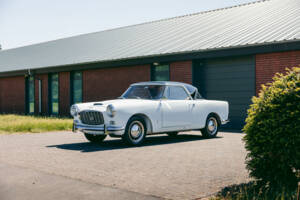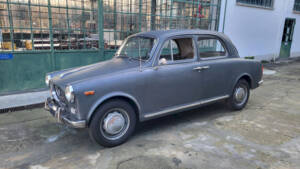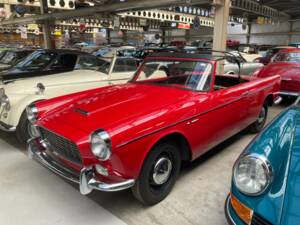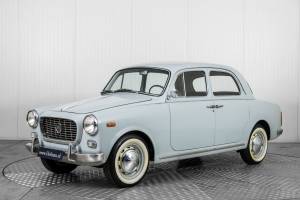- Automobile
- Lancia
- Lancia Appia (9 offerte)
Lancia Appia classic cars for sale
The Lancia Appia, produced between 1953 and 1963, stands out in the world of classic cars for its refined engineering, innovative design features like pillarless doors, and a range of body styles from saloon to coupé and cabriolet. With its smooth V4 engine and comfort-focused chassis, the Appia is a prime example of Italian understated sophistication from the postwar era.
Risultati della ricerca

1962 | Lancia Appia
1962 Lancia Appia S3 superb example RARE
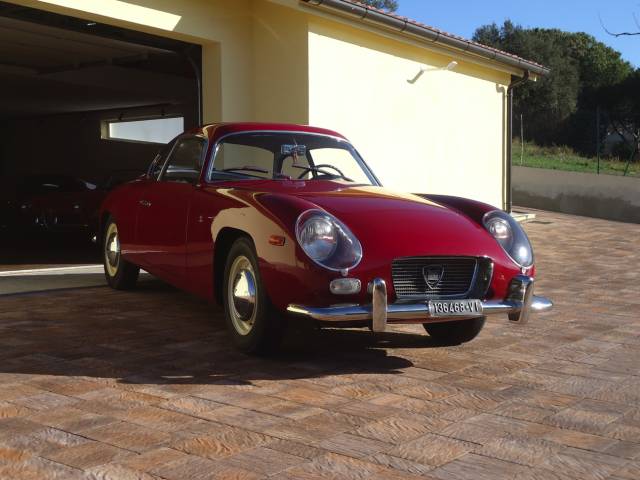
1960 | Lancia Appia GTE Zagato
Restauro totale effettuato nel 2012

1959 | Lancia Appia Pininfarina
Rare Coupé Version

1962 | Lancia Appia
Lancia Appia Berlina III Serie – 1962
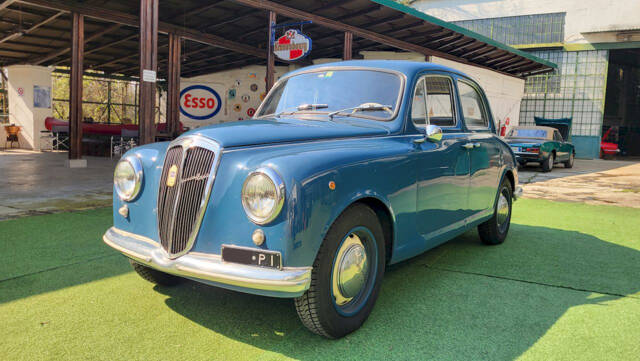
1954 | Lancia Appia C10
Lancia Appia Berlina I Serie – 1954
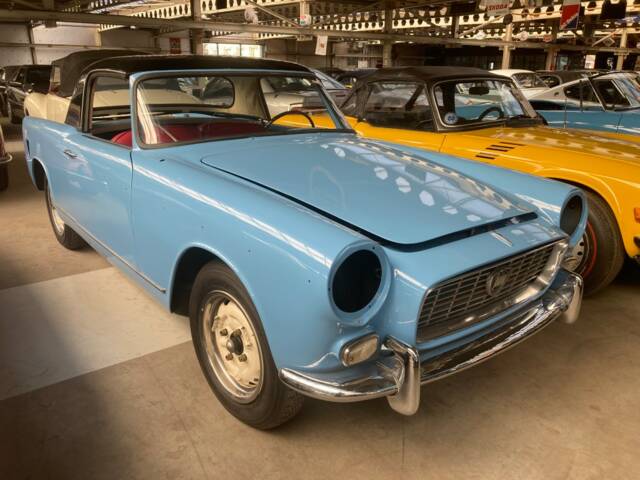
1957 | Lancia Appia Convertible Vignale
Lancia-Appia cabrio 1337

1959 | Lancia Appia Convertible Vignale
Lancia-Appia cabriolet red
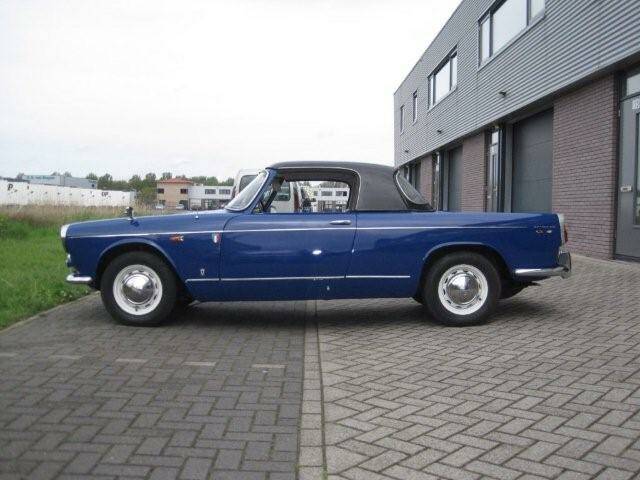
1960 | Lancia Appia Convertible Vignale
Lancia-Appia Cabrio restored

1962 | Lancia Appia
Lancia APPIA III SERIE .
Lancia Appia listing references from Classic Trader
Below you will find listings related to your search that are no longer available on Classic Trader. Use this information to gain insight into availability, value trends, and current pricing for a "Lancia Appia" to make a more informed purchasing decision.

1972 | Lancia Appia
Lancia Appia Pininfarina Coupe MkIII | 1961 | Route 66 Auctions - For sale by auction. Estimate 26500 EUR

1961 | Lancia Appia Convertible Vignale
III serie totalmente restaurata
History of the Lancia Appia
The Lancia Appia was introduced in 1953 as the successor to the Lancia Ardea, aiming to continue Lancia's tradition for innovation and technical excellence. Designed during a period where quality, durability, and comfort were paramount, the Appia benefited from the last application of Lancia’s sliding pillar front suspension, a hallmark going back to the Lancia Lambda. The model was continuously developed over a decade, reflecting changes in automotive standards, with production coming to an end in 1963 as it was replaced by the Fulvia. With around 20,000 Series I units, 22,400 Series II, and almost 60,000 Series III produced, the Appia's legacy is firmly rooted in Lancia’s postwar identity.
Model Series and Evolution
Over its ten-year production, the Appia was divided into three main series.
- Series I (1953–1956): Featured significant aluminium bodywork for weight reduction, pillarless construction with 'suicide doors', and a V4 engine delivering 38 PS. Around 20,000 units were sold.
- Series II (1956–1959): Brought a redesigned and more powerful engine (43 PS), modest styling updates, improved cabin space, with 22,424 built.
- Series III (1959–1963): Showed the design's maturation with a rectangular grille, new front suspension, and a 48 PS engine. This series alone accounts for almost 60,000 cars. Beyond saloons, the Appia also appeared as estates, vans, and numerous custom coachbuilt versions by firms like Vignale and Pininfarina. Performance variants targeted sporting drivers, while cabriolet and coupé bodies emphasised luxury and exclusivity.
Highlights and Distinct Features
The Appia stands out for its advanced engineering, including the compact narrow-angle V4 engine, pillarless body for exceptional access and elegance, and Lancia’s sliding pillar front suspension (up to the end of Series III). Interiors featured substantive materials—wool, leather, or quality vinyl—paired with Art Déco-inspired instrumentation. Its understated design, drawing cues from the larger Aurelia, avoided ostentation and prioritised substance. Highly comfortable, the Appia balanced daily usability and refined chassis characteristics. Custom editions by Vignale and Pininfarina further elevated its allure for connoisseurs. Replacement parts are still mostly available, though rare coachbuilt components can pose challenges.
Technical Data
Special Editions and Collectible Models
The Appia range boasts several exclusive versions:
- Vignale Cabriolet: Less than 1,600 made, highly valued for their design and rarity.
- Vignale Lusso Coupé: Only 478 units, offering deluxe trim and exclusivity.
- Pininfarina Coupé: Produced under 1,000 times, these two-door models are among the most elegant Appias.
- GTS and Sport: High-performance variants with 58–60 PS. Rarity and craftsmanship from prominent coachbuilders often result in higher market values for these versions.
Engine, Performance, Transmission and Handling
The Appia’s V4 engine is renowned for smooth, reliable running and a surprising degree of refinement given its compact size. Series developments gradually improved power output, enabling top speeds up to 140 km/h in sport variants. The four-speed column shift is generally slick, contributing to effortless city driving. Lancia’s sliding pillar suspension, though somewhat dated by the late 1950s, ensures a compliant ride and precise steering. Later models benefited from more modern suspension geometries and, in some coupés and cabriolets, disc brakes up front. Though never aiming for outright sportiness, the Appia’s inherent balance and supple ride comfort made it an excellent touring car by 1950s standards. - Serie III (1959–1963): Most abundant on the market, the mature evolution with the rectangular grille and enhanced chassis.
- Vignale Cabriolet and Pininfarina Coupé: Stand out for design and exclusivity, paired with higher-output engines.
Interior, Comfort, Exterior and Design
Lancia prioritised understated elegance, drawing on design language from the Aurelia. The absence of a B-pillar not only defined the Appia’s silhouette but enabled effortless entry and exit. The exterior is marked by a gradual transition from the original shield-shaped grille (Series I/II) to the trapezoid format (Series III). Colours typically reflected Italian tastes of the era: grigio, bianco, blue, beige, and silver. Leading Italian coachbuilders contributed individualised takes, particularly Vignale and Pininfarina. The interiors featured materials including premium wool, leather, and Art Déco-inspired dashboards with clear, attractive instruments. Special variants offered luxury enhancements—elegant steering wheels, extra chrome, wood accents. Options such as sliding roofs, special paints, and original accessories (often still present) further distinguish these vehicles.
Other Relevant Features
Most Appia models shipped with extensive original equipment such as spare wheels, toolkits, and technical manuals. These cars, regularly approved for historic motorsport events like the Mille Miglia, appeal to those seeking authentic period engineering and period-correct driving enjoyment. Their practical saloon configuration combined with lightweight construction and all-original replacement parts supply supports regular classic motoring.
Summary
The Lancia Appia stands as a touchstone for Italian craftsmanship and thoughtful engineering, bridging everyday practicality with the grace of Italian postwar automotive design. Its unique features—compact V4, pillarless doors, convertible and coupé options—ensure a distinct character in today’s classic market. Whether as a saloon or rarer coachbuilt variant, the Appia continues to attract enthusiasts who appreciate engineering honesty and timeless style.


